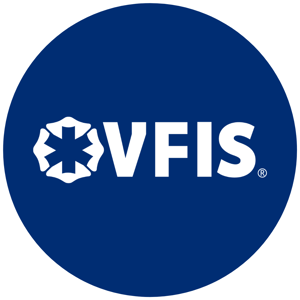What fire and emergency services personnel can learn from healthcare workers about delivering serious news to patients and their loved ones.
As an emergency responder, you’ll likely have to deliver heart-wrenching, life-altering and irreversible news at some point during your career. These conversations are understandably difficult for everyone involved and, as the message-deliverer, you play an especially critical role in guiding the conversation.
The use of indirect, inappropriate or insufficient language are just a few ways that a responder’s words could make a painful situation even more traumatic. For example, if you have the unfortunate job of letting a family know that their beloved pet did not make it out of a fire, the last thing you want to do is start the conversation off by giving false hope and end-up causing secondary damages.
Knowing how to communicate bad news isn’t a skill most people are inherently good at—and while it’s taught and practiced in other fields, there’s little training, resources and education focused on this topic in fire and emergency services. In fact, one study reported that less than 20% of pre-hospital EMS providers have received death notification training!
You can help your team feel more comfortable, competent and confident when delivering bad and serious news by training and discussing best practices. However, with the current lack of resources dedicated to this topic in emergency services, we can take a little inspiration from the healthcare industry to help us get started.
Best practices for delivering life-altering news in healthcare
There’s no doubt that delivering serious news is a part of a physician’s job. Most people can think of a time when they or a loved one has received some sort of life-altering news from a doctor—and how that message was delivered may have made a significant difference in that moment, even if the outcome would have been the same regardless.
An article published by American Family Physician, “Delivering Bad or Life-Altering News”, discusses this topic—but you may be surprised to know that there’s even limited studies on this subject within healthcare.
While many models do exist to help practitioners skillfully deliver bad news and provide comfort to patients and loved ones during these times—most research has been centered around delivering specific messages, like cancer diagnoses, which is obviously only one type of serious news that a physician may deliver.
Nonetheless, some guidance on such a difficult task is better than none. So, let’s dive into three models for delivering bad news in healthcare that are outlined in the paper. And while some aspects of these protocols may have limited or no practical application in a pre-hospital setting, consider how you could still apply some of the sentiments behind the guidelines as you read along.
3 Protocols designed to help healthcare providers have difficult conversations with patients and their loved ones:
THE ABCDE method:
- ADVANCED PREPARATION: Review the patient’s history and consider the best way to prepare for the conversation, like arranging for a support person to be present.
- BUILD A THERAPEUTIC ENVIRONMENT: Select a private environment, have seating for all parties and maintain eye contact.
- COMMUNICATE WELL: Allow for silence, be direct, move at the patient’s pace and avoid medical jargon.
- DEAL WITH EMOTIONS: Actively listen to the patient and family’s reactions and address emotions as they arise.
- ENCOURAGE EMOTIONS: Explore what the news means to the patient and their family.
The BREAKS method:
- BACKGROUND: Come prepared by understanding the background and clinical history of the patient—and set up an environment that is comfortable.
- RAPPORT: Introduce yourself, sit down and build rapport.
- EXPLORE: Determine the patient’s understanding of the illness—and find out how much they’d like to know about their diagnoses.
- ANNOUCE: Preface the bad news with a warning—and be straight-forward with the news while using non-medical language.
- KINDLE: Address emotions, show empathy and go at the patient’s pace.
- SUMMARIZE: Summarize the news and concerns and provide that summary to the patient.
The SPIKE method:
- SETTING: After assessing the patient’s history and the situation, find the proper setting to deliver the information. Consider things like privacy, comfort and possible interruptions.
- PERCEPTION: Check if the patient is accurately understanding your message—and look for signs of misunderstanding, denial or unrealistic expectations.
- INVITATION: People can differ in the amount of detail they’d like to receive—get permission before sharing additional information.
- KNOWLEDGE: Use simple, non-technical words and avoid jargon.
- EMOTIONS: Show empathy and validate their feelings.
The paper outlines several other nuances to consider when delivering serious news, including:
- Cultural norms; for example, one study found that “Korean Americans and Mexican Americans are more likely to favor a family-centered medical decision model; in contrast, African Americans and European Americans prefer a model with more individual patient autonomy.”
- Unrealistic expectations, like those portrayed about medicine on television, can create issues or bias.
- General patient preferences, like the fact that most patients prefer to receive bad news in-person, in simple language, with the provider’s full attention and the ability to ask questions.
Communicating the news of a patient’s death to loved ones
In addition to delivering bad news to patients, the healthcare industry also has specific protocol to deliver death notifications to family members and loved ones, including GRIEV_ING which is typically used to train emergency physicians.
The GRIEV_ING method:
- GATHER: Ensure all family members and important individuals are present.
- RESOURCES: Utilize available resources—like social workers or a chaplain.
- IDENTIFY: Identify yourself as the medical provider and identify the deceased patient by name.
- EDUCATE: Use simple language to explain the events that took place.
- VERIFY: Use the words “dead” and “died” (rather than “passed away” or “no longer with us”) to verify that the patient is deceased.
- _GIVE SPACE_: Give them time and space to process the information.
- INQUIRE: Ask if there are any questions.
- NUTS AND BOLTS: Plant seeds about logistical tasks that they’ll be asked to address soon (like organ donation).
- GIVE: Provide your contact information for any further questions.
Beyond guidelines and best practices, medical practitioners also follow a Code of Medical Ethics that are set by the American Medical Association (AMA). Here’s a summary of how the Code addresses professional standards for informing families and loved ones of a patient’s death:
“Informing a patient’s family that the patient has died is a duty that is fundamental to the patient-physician relationship. When communicating this event, physicians should give foremost attention to the family’s emotional needs and the integrity of the patient-physician relationship.” Learn more>>>
Addressing the differences between delivering bad news in a healthcare setting and at an emergency scene
“There are some obvious and inherent differences between delivering news in a clean, controlled hospital setting vs. out in the field,” explains Erik Swanson, VFIS Sales Executive, retired fire service member and Founder of Fuel Their Fire Scholarship Fund.
“Your team will never have the ability to manage the visual, audible and scent components of a scene—there could be a demolished vehicle, smell of smoke, visible drug paraphernalia or other triggering conditions—and those things will likely be remembered just as vividly as the news you deliver.
When you add in the fact that you don’t have any historical knowledge to bring context to these situations or time to prepare for these conversations in the same way that a physician would typically have—plus, you probably weren’t trained to have these conversations at all—it’s easy to see that we’re putting our responders in a tough position.
This likely needs to be a bigger conversation in the industry, but until then, it’s unfair to your team (and the public) to continue to send your responders into the field without some guidance for these situations—and simply having a conversation is a great place to start.”
Recognizing the similarities between delivering bad news in healthcare and fire and emergency services and utilizing the best practices that we can apply.
Sharing the news of someone’s death is a significant event for the surviving family members—and the words and mannerisms used in those moments can last a lifetime. So, while it may not be a perfect comparison, there still may be some ways that your team can modify the existing healthcare models for delivering bad news to help address these situations. After all, you don’t get a second chance at this.
Here are a few fairly universal practices that could help provide your team with some guidance for these difficult conversations:
- Select the crew member who’s best suited to deliver the news. This person should consider removing their hat, helmet or sunglasses so that they can make direct eye contact and introduce themselves with their name and role. For instance, “My name is Bill. I’m an EMT with the fire department.”
- Speak in direct, simple language. Use the word “died/dead” within the first sentence or two when sharing news of the death of a loved one and use the deceased person’s name (when possible). For example, “When we arrived, John’s breathing and heart had stopped. In spite of everything we have done, he has died.”
- Take your time. Speak at a slower pace than normal to give the family ample time to process what you’re saying. Allow for silence, answer questions and let them dictate the level of detail they’d like to discuss.
- Show empathy. NURSE is another acronym that you may be able to apply in your organization and it’s used in several industries to help express empathy, including Veteran Affairs.
Here are examples of how NURSE can be used in practice:- NAMING THE EMOTION: I can’t even imagine how scared you must be.
- UNDERSTANDING: I understand that you are worried about your dad.
- RESPECTING: This must be a tremendous amount to deal with.
- SUPPORTING: Please let me know what I can do to help you.
- EXPLORING: Can you tell me more about that?
- Understanding the norms in your area. You know your community best. Establish a protocol that makes sense for the cultural differences in your area and your specific operations.
These are the moments that no one wishes for—and no one is perfect. But, by talking with your team about how to approach these situations and practicing various scenarios as a group, you can help ensure that no one on your team has to tackle this issue alone.
Thank you for all that you do—and for being there for your community during all of the moments that matter.
DISCLAIMER
The information contained in this blog post is intended for educational purposes only and is not intended to replace expert advice in connection with the topics presented. Glatfelter specifically disclaims any liability for any act or omission by any person or entity in connection with the preparation, use or implementation of plans, principles, concepts or information contained in this publication.
Glatfelter does not make any representation or warranty, expressed or implied, with respect to the results obtained by the use, adherence or implementation of the material contained in this publication. The implementation of the plans, principles, concepts or materials contained in this publication is not a guarantee that you will achieve a certain desired result. It is strongly recommended that you consult with a professional advisor, architect or other expert prior to the implementation of plans, principles, concepts or materials contained in this publication.
This blog post may contain the content of third parties and links to third party websites. Third party content and websites are owned and operated by an independent party over which Glatfelter has no control. Glatfelter makes no representation, warranty, or guarantee as to the accuracy, completeness, timeliness or reliability of any third party content. References to third party services, processes, products, or other information does not constitute or imply any endorsement, sponsorship or recommendation by Glatfelter, unless expressly stated otherwise.
Related posts
We asked 10 members of our VFIS Team to name one auto-related risk that they believe is underdiscussed in fire and EMS agencies. Here’s what they said.
Most volunteer fire departments rely heavily on POVs, but there are inherent risks you should know.
Establish a Emergency Vehicle Operations Program that includes driver/operator requirements to help ensure your vehicles are in the right hands.


.png)






Submit a Comment